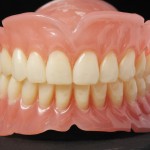
The use of dental implants has increased the number of treatment options for edentulous patients. Implant supported fixed or removable completed dentures are considered to improve chewing ability and provide greater satisfaction. A range of attachment systems are available falling into two main categories, splinted and unsplinted and a number of studies comparing the two have been conducted.
The aim of this review was to determine the influence of the splinted and unsplinted overdenture attachment system on the marginal bone loss, implant survival rate and complications.
Methods
Searches were conducted in the PubMed/MEDLINE, Scopus and Cochrane databases. These were supplemented by hand searches in the journals, Clinical Oral Implants Research, Journal of Oral Rehabilitation, The Journal of Prosthetic Dentistry, Journal of Prosthodontics and Journal of Dentistry. Randomised controlled trials (RCTs) and prospective studies with at least 10 participants and a minimum follow-up period of 6 months, that compared splinted and unsplinted attachment systems within the same study and were published in English were considered.
Two reviewers independently selected studies with data being extracted by a single reviewer and being verified by a second. The Cochrane risk of bias tool and Newcastle-Ottawa Scale were used to assess individual studies. Relative risk (RR) and 95% confidence intervals (95%CI) were derived for dichotomous outcomes and mean difference (MD) and 95%CI for continuous outcomes and a random effects meta-analysis conducted.
Results
- 9 studies (6 RCTs, 2 prospective, 1 cross-over) were included.
- Of the 6 RCTs, 5 were at unclear risk of bias and 1 at high risk.
- A total of 984 implants were placed in 380 patients (average age: 62.8 years)
- 191 splinted and 196 unsplinted overdentures were placed.
- The average follow-up time was 59.7 months (range: 9-120 months).
- Meta-analysis found
- no significant difference in mean bone loss between the splinted and unsplinted groups MD= −0.11; (95% CI: −0.37 to 0.14) [6 studies].
- no statistically significant difference between the splinted and unsplinted groups with regard to the implant survival rate RR=0.37 (95%CI: 0.10 to 1.36) [3 studies]
- 4 studied evaluated prosthetic complications. In all there were 39 complications ,21 in splinted group and 18 in the unsplinted.
- Meta-analysis found no statistically significant difference. RR= 1.26 (95%CI: 0.80-1.99)
Conclusions
The authors concluded: –
The splinted and unsplinted overdenture attachment systems achieved similar results with regard to marginal bone loss, implant survival rate and prosthetic complications.
Comments
While a good range of databases and journals were searched for this review the restriction to include only English language studies may have an impact on the findings. In all 9 studies were included, two had follow up period of 15 months or less, 3 three years and four studies for 5 years or more. The results from the available studies suggest no difference between the two approaches. However only 243 patients were involved in studies lasting longer than 5 years and it is only in these longer studies when we might begin to see differences appearing. There is also a concern regarding the limited number of RCTs available and the limited quality of those that are available. As the authors note because of the range of attachment systems available as well as other factors related to implants (eg. type, size, loading protocol) additional high quality well conducted studies are needed which may have an impact of the findings of this review.
Links
Primary Paper
Leão RS, Moraes SLD, Vasconcelos BCE, Lemos CAA, Pellizzer EP. Splinted and unsplinted overdenture attachment systems: A systematic review and meta-analysis. J Oral Rehabil. 2018 Aug;45(8):647-656. doi: 10.1111/joor.12651. Epub 2018 Jun 7.Review. PubMed PMID: 29761853.
Original review protocol in PROSPERO
Other references
